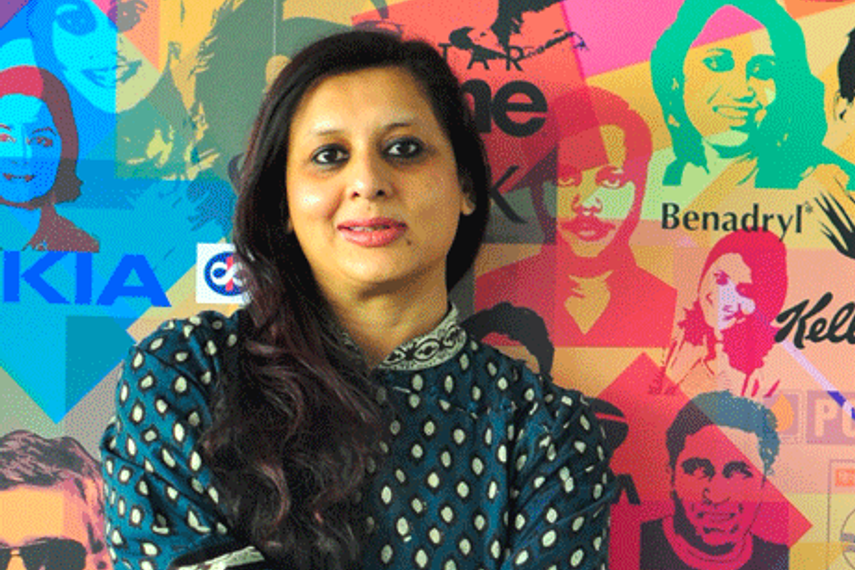
You switched from film production to advertising, unlike other agency folk who do it the other way around. How did that happen?
I worked in production at White Light Moving Picture Company for two years, while I was still in college (St Xavier’s Mumbai), basically to earn some extra pocket money. It was fun, and in between, the producers would cast me as an extra in some commercials, as in Philips and Sunlight, as well, so I’d get some more spending money out of that. Sometimes, they’d even get me ready and then decide they didn’t need me anymore – the sad part of being the eternal flunky back then.
White Light had a very cool way of working: they used to give us the script (in fact, I don’t know how many production houses do that even now) and tell us to come back with how we saw it. That’s such a great discipline even now, because if you ask people who write, what they see, they don’t have an answer. It’s all very well to just say someone’s angry but what does angry mean: is it a ballistic anger or quiet anger or the kind where someone goes anal? That basic foundation of first looking at things and then putting them down was so fantastic. While I was enjoying production, I was an English literature student and wanted to write. So when I finished college in 1994, though I was asked to continue, I was very clear I wanted to get into advertising and work at Lowe Lintas.
Why particularly Lowe Lintas?
There were many agencies we went to back then but Lintas was just so cool – they were on the 15th floor of Express Towers, they used to have this huge blow-up of all the ads they’d done, and everybody looked very busy and important. I used to think, “This is absolutely what I want.” So I applied, but there was no vacancy, and I refused to take a copy test, because I did have the work experience of 60 commercials behind me. I was persistent that I wanted to work there though; it paid off, and they finally decided to take me on. So I joined work there under Madhu Noorani as a trainee and it was fabulous. I worked on Johnson & Johnson and Cadbury, everything non-Lever [Hindustan Unilever] at that time. Madhu allowed me to work on everything I wanted to and if there was a radio recording going on or an edit, she would pack me off there, so I would do a lot more than just sit on my desk and write copy.
How did Ogilvy happen?
I went to Ogilvy because I got a call from Piyush, saying, “Come.” I thought, “This is it.” I didn’t even bother questioning it. A lot of people in the system told me to go for the opportunity to go work on Asian Paints and Cadbury. Within the first week, though, I was wondering how to keep my dignity and leave. There were lovely people there, Piyush had just taken over and there was a big transition, but I just knew that I wasn’t going to be happy there, and I believe very strongly in the concept of “agency cultures” ever since. I somehow managed ten months, but there was excellent work and even in that time, I learnt the meticulousness of detailing at Ogilvy, honing the craft, and not saying “Yes” till you’re completely convinced this is what you want to go with.
I went back to Lintas after that, to the same desk, the same brands and the same clients. After a while, I also started working on Fair & Lovely, and Pepsodent; Balki joined at that time, which was again a different learning curve, because for an agency that is so “gentlemanly”, here he was, so earthy, real and in your face, and he just disrupted everything. We couldn’t run away from him; he was so brilliant.
What made you move to JWT?
I joined JWT in 2002 primarily because I needed to do my own thing. I was just too comfortable at Lowe; even the liftman and security guard had become dear to me. When JWT called, I found I didn’t know a soul here – and that’s what I wanted, to join a place where I didn’t know anyone and nobody knew me. In so many years, I’ve had different bosses and now I’m running an office; so even within JWT there’s been a lot of learning.
What’s the difference you see in advertising after so many years in the business?
I think in the beginning, there was a certain purity and a lot more integrity. Everybody was very sincere about what they were doing. Right now, it’s definitely changed a little bit; the fun isn’t there anymore and it’s become a little more serious. Advertising people seem a little more afraid right now, the audaciousness and flamboyance is sorely lacking.
What’s it been like working on an iconic brand like Lux?
Lux has always used stars and that’s been their whole USP. But two years ago, when we were told to revamp the brand with Aishwarya Rai, the agency’s call was to bring in Abhishek Bachchan with the insight that we’ve seen Aishwarya the star, the diva and the Miss World, but we haven’t seen Aishwarya, the woman, when she’s home with her husband. Unfortunately, every brand is using a star and there’s a certain sameness creeping in, because if they spend good money on production value, they’ll get a good-looking film. What makes Lux different is that the brand really gets under the skin of the star, and makes you want to feel like her, more than just look like her. So it’s an iconic brand, and they’re brave enough to say let’s push it within what we have.
For me, I love the challenge of working on a big brand which has very strict codes of dos and don’ts, but still we’re able to change something within that.
Tell us about Sunsilk Gang of Girls.
Sunsilk as a brand was stuck in a time warp because the consumers had evolved and were much more “with it” than the brand was, and they were calling it fuddy duddy. We couldn’t do something overnight, so this whole activation exercise came up. Honestly, it opened our eyes because we had no idea what we were getting into. People could blog a couple of lines on gangofgirls.com, and we used to sit back late in the night, and go through the comments. It just became a part of our lives, and it had nothing to do with hair. It was long before Facebook or anything else came on board.
What are the kind of people you’d hire now, from your own experience of finding it a little hard to get in?
Everything in advertising is so strait-laced: you’re supposed to finish college, go to film school or do mass communication, take a copy test and then start writing. Just because I’d done it the other way around didn’t change the fact that I still wanted to write. It used to make me so mad back then when I wanted to get into Lintas. The industry did (and still does) follow a very conventional approach to sourcing talent: it’s the standard "show me your CV-what kind of ads have you done-three reference checks" approach; we’re not even creative in the way we look at people. There are lots of people out there who want to join. I’m so glad things are changing now and we’re looking at "ideas" people from different fields.
I’ve just hired an art director, an Indian who’s worked in Australia, who only does mobile advertising, which I think is very cool. She said her strength was that if I gave her an idea, she would take it forward into 360, especially through mobile activation and gaming. I asked her to show me her work, and she blew my mind. We don’t think like that; gaming and mobile is usually the last slide of the presentation.
On the other side of the table now, what do you think of ad film production in India?
I do a lot of work with international directors and directors of photography. I think they bring a certain sensibility to the table which I don’t see all our guys doing here.
I have kids who brief people on the phone, and give them the film because they think he sounded really good. I’m always a little horrified by that because I still meet a director six times before I start shooting. I believe in discussing everything threadbare before the shoot starts; after that (and I know this since I’m from that background), you have to let the director be.
Balwadi Night School won quite a few metals last year. How important are awards for you?
For JWT as a network, awards are extremely important. I think if large agencies don’t really set the benchmark of really pushing it, where it means winning awards on the real work, with client blessings, then it’s quite a shame. So we are concentrating on getting that bit right as well.
Maharashtra Jana Vikas Kendra 'Street To School' (2009) Won Grand Prix at WPP whipped cream awards; Gold at Cannes, AdFest, Spikes, AME Awards, Goafest; Finalist at One Show. Brief Street To School was an endeavour to make education accessible to children on the street. Simple, designed in keeping with the environment and borrowing from what we have around us. Familiar, therefore more hardworking and thought provoking.
Lux 'Tansen' (2009) Won Effies Brief A diva but a woman first. Aishwarya and Abhishek and their together moments created an unprecedented hype around a brand that needed revitalizing while keeping the core star equity unchanged.
Sunsilk 'Gang of Girls' (2008) Won Gold at AdClub awards; Silver at Goafest and Effies Brief Listen to the consumer and change the conversation. A JWT philosophy that earned us rich laurels both with our TG and SSK. Fuddy duddy became hip and trendy and it had nothing to do with traditional spin and grin advertising.
Lux 'Flowers' (2008) Won Silver at Goafest; Finalistat One Show Brief Beauty brands can break new ground in print. It's lyrical and contemporary and it still is Lux.
Godrej Security 'Torn Envelope' (2009) Won Silver at AdFest Brief Godrej Security and the proverbial torn envelope. Made its point emphatically and simply.
Dhobi Ghaat (2010) Won Silver at Spikes; Finalist at Cannes Brief Child labour and quintessentially Bombay in flavour. Both close to my head and heart.
Sunsilk 'Entrapped' (2007) Won Silver at AAAI Awards Brief Front cover of Lurzer’s International Archive. It got us a cover and made the age old problem of messy hair beautiful even in the traditional before/after structure. "Sunsilk on a Lurzer's cover!" was what my counterpart in London said . I said, "Yup, Sunsilk India. : )"
Berger Paints (2009) Won Silver at Spikes; Finalist at Cannes Brief Outdoor can be fun and make a simple point. Berger Sky-like was innovative and new in the category here.
Monte Carlo 'Rip off' (2007) Won Silver at Goafest and Adclub; Finalist at Cannes Brief My favourite because we had all of ten minutes. It's ridiculously simple and makes its point ridiculously well.
Birla Sun Life Insurance 'Sehwag, Yuvraj' (2009) Brief Cricket icons can be vulnerable too. Inspite of being revered and adored, fame is eventually short-lived. Tied up with our insight for the campaign and dishy cricketers spoke from the heart.











.jpg&h=334&w=500&q=100&v=20250320&c=1)




.jpg&h=334&w=500&q=100&v=20250320&c=1)


.jpg&h=334&w=500&q=100&v=20250320&c=1)

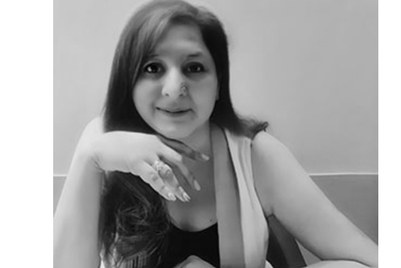
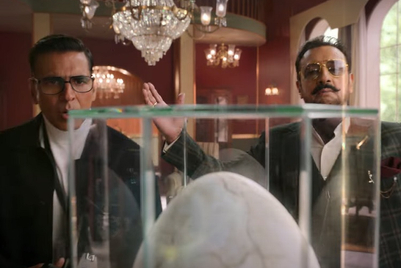


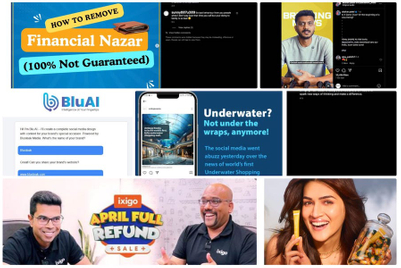
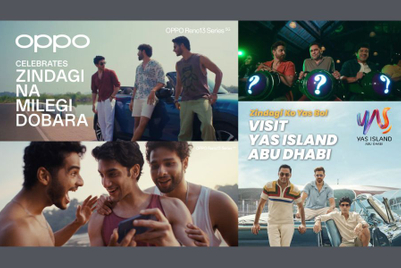
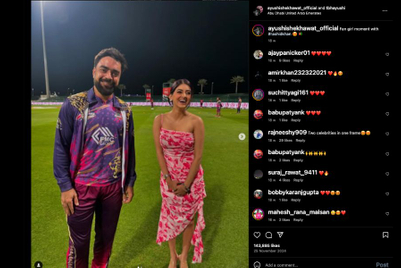
.jpg&h=268&w=401&q=100&v=20250320&c=1)
